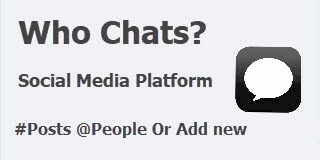-
Ροή Δημοσιεύσεων
- ΑΝΑΚΆΛΥΨΕ
-
Blogs
How Might AI Transform Revenue Forecasting for Cardiology Practices?

How Might AI Transform Revenue Forecasting for Cardiology Practices?
Predicting revenue can feel like a guessing game for cardiology practices. Even with traditional billing tools, it’s hard to make accurate predictions because of unexpected problems like patient no-shows, insurance denials, or changing healthcare rules. However, artificial intelligence (AI) is helping healthcare providers, including cardiology practices, make better and more accurate revenue forecasts.
This blog explores how AI can revolutionize revenue forecasting for cardiology practices. By the end, you'll understand the key benefits of integrating AI into your forecasting process and how it enhances cardiology billing services, making financial operations smoother and more predictable.
Why Revenue Forecasting Matters for Cardiology Practices
Revenue forecasting is more than just projecting your practice’s income for the next month or year—it’s a strategic tool that shapes operational decisions. Accurately forecasting revenue allows cardiology practices to:
-
Manage resources efficiently, including staffing and medical supplies.
-
Identify cash flow gaps early and mitigate financial risks.
-
Plan for long-term growth and investments in advanced medical technology.
Traditional methods often fall short because they rely on historical data, basic trends, and manual calculations. These approaches are prone to errors and cannot adapt to real-time or multi-factor changes in patient behavior, insurance regulations, or procedure reimbursements.
AI changes that paradigm, bringing a more dynamic, data-driven approach to revenue forecasting.
How AI Can Revolutionize Revenue Cycle Management (RCM) in Cardiology
Artificial intelligence, when integrated into RCM for cardiology, offers a variety of advantages that traditional methods cannot match.
1. Predictive Analytics for Revenue Forecasting
AI-powered systems have the ability to leverage vast amounts of data to predict future outcomes with high accuracy. For example, AI can analyze patient demographics, historical billing information, seasonality trends, and even external factors like healthcare policy changes to forecast revenue.
An AI system doesn’t just tell you "what” might happen—it explains “why” it might happen and suggests actions to mitigate or capitalize on these forecasts. For cardiology practices offering high-cost procedures such as interventional surgeries or diagnostic imaging, this level of precision can prevent underestimations that disrupt cash flow.
Example:
A cardiology practice might traditionally overestimate the revenue generated from consultations because of last-minute patient cancellations. AI forecasts would identify patterns in patient behavior, such as seasonal trends in skipped appointments, and adjust revenue predictions accordingly.
2. Early Detection of Reimbursement Risks
Insurance denials rank among the most troublesome challenges for healthcare providers. Cardiology billing services can become complex, as procedures often span multiple sessions or involve unique coding for specific heart-related conditions.
AI systems excel in detecting patterns of claim denials before they occur. By analyzing data from past denials, AI can flag medical billing codes or documentation errors likely to trigger reimbursement declines. This allows practices to proactively correct issues before submitting their claims.
Benefits:
-
Improve reimbursement rates for cardiology services like echocardiography and catheterization.
-
Reduce administrative hours spent reworking denied claims.
-
Shorten the payment cycle, boosting cash flow predictability.
3. Enhanced Patient Payment Predictions
Patient payments make up a significant percentage of any cardiology practice's revenue, yet they are notoriously hard to predict. Patients may delay payments due to unexpected costs or misunderstanding their insurance obligations.
AI solutions can integrate with patient communication platforms to:
-
Estimate patient propensity to pay based on financial history and behavioral patterns.
-
Personalize payment reminders and plans to boost collections.
-
Predict payment collection cycles more accurately, offering practices a clear picture of receivables.
For instance, an AI tool could predict that payments for elective procedures like heart health screenings are more likely to be delayed than payments for urgent interventions. This insight gives administrators time to plan accordingly.
4. Streamlining Cardiology Billing Services
Billing errors and inefficiencies in cardiology billing services are common, especially for complex procedures that involve multiple steps, stakeholders, or coding nuances. AI simplifies this process by automating tasks like billing code verifications, claim submissions, and patient invoicing.
With fewer billing errors, cardiology practices can:
-
Boost revenue by ensuring claims are approved the first time.
-
Maintain strong relationships with insurers by reducing back-and-forth communication.
-
Free up administrative staff to focus on patient care and other priorities.
5. Real-Time Dashboards for Financial Visibility
Implementation of AI doesn’t stop at forecasting—it provides real-time financial dashboards that allow cardiology practices to monitor revenue trends and KPIs.
AI-powered platforms aggregate data from various sources, including patient appointments, claims, and reimbursements, to offer actionable insights in real-time. These dashboards can highlight revenue bottlenecks, such as slow-paying insurance companies or a high rate of claim resubmissions, allowing practices to act immediately.
With real-time visibility, cardiologists and administrators can manage their practice’s financial health more proactively.
The Competitive Advantage AI Brings to Cardiology
One of AI’s most underrated strengths is its ability to deliver a competitive advantage in an increasingly data-driven healthcare environment. Cardiology practices adopting AI-powered revenue forecasting tools can:
-
Outpace competitors with better financial planning and resource allocation.
-
Offer patients a superior experience through transparent pricing and smoother billing processes.
-
Reduce operating inefficiencies, freeing up resources to invest in advanced cardiology treatments and equipment.
For practices looking to scale or adapt to new payment models like value-based care, AI-integrated RCM solutions are not optional—they are essential.
Barriers to AI Adoption and How to Overcome Them
Like any technological advancement, integrating AI into a cardiology practice comes with challenges. Key barriers include:
-
Cost of Implementation: Many smaller practices hesitate to adopt AI due to upfront costs. Partnering with third-party vendors offering specialized cardiology billing services often provides a more affordable alternative.
-
Data Integration Hurdles: AI systems require access to clean and comprehensive datasets, which can be tricky for practices with legacy systems. Engaging expert IT consultants to streamline data migration is vital.
-
Skepticism Among Staff: Employees may fear that AI systems reduce their role in the practice. However, AI should be presented as a way to augment—not replace—human efforts.
Practices that invest in staff training and start small with pilot programs are more likely to overcome these barriers effectively.
Taking the Next Step in AI for Cardiology
Integrating AI into revenue forecasting is not just about numbers—it’s about preparing cardiology practices for the future. From predictive analytics to streamlined billing services, the applications of AI in the revenue cycle are vast and impactful.
If you’re considering AI solutions for your cardiology practice but aren’t sure where to begin, consulting with a provider specializing in cardiology billing services can help. They offer tailored insights and tools designed to address the unique demands of cardiology practices.
Start making data-driven decisions and optimize your revenue management today.




